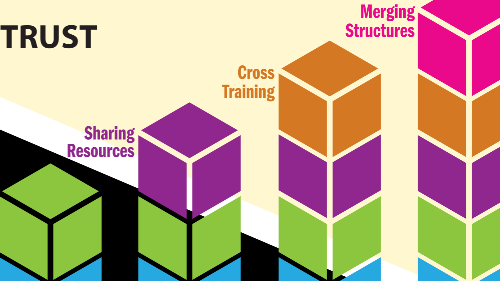CAPP EBPs in Out-of-School Settings

Important Reminder
To better reach disenfranchised and transient youth who are prone to greater health disparities, teen pregnancy, and STI rates, CAPP-funded projects are required to implement evidence-based programs (EBPs) with youth in an out-of-school setting at least twice a year (once per biannual reporting period). Incentives are allowed in out-of-school and after-school settings in line with the incentives policy below.
What is considered "out-of-school"?
For the purposes of the CAPP initiative, an out-of-school setting takes place:
- Off school grounds and
- During out-of-school hours
Programs may be held late afternoons, evenings, weekends, or during school breaks (including summer).
Recruiting Community Partners
While some organizations may already have space on site for out-of-school programming with youth, others may need to create partnerships with community partners in order to use their space. Conducting an EBP at another organization can present challenges but can also strengthen community connections and provide unique opportunities for collaboration.
Begin by being clear about your needs and taking stock of the current contacts and partnerships you have.
Do you already have access to youth participants and only need the space to deliver the EBP? Do you have the space but do not know how to recruit youth outside of a school setting? Or are you in need of both youth and space to engage them?
Adolescent sexual health and behavior can be a topic of controversy in some communities. For community members, the topic of teens and sex may raise communication barriers that are difficult to overcome. A more promising approach might be to address adolescent health and well-being in more general terms. Reframing like this can be key. By talking about the tasks of adolescence — and risk taking as part of normal adolescent development — you may create an opening to discuss goals that all can agree on. You may find that you are able to collaborate on goals related to healthy youth development, such as giving young people the tools to make healthy decisions, build positive relationships, and develop education and career goals — all of which have real impact on teen pregnancy and sexual health.
Recruiting Youth
Getting youth to your program can be difficult if they have competing after-school priorities such as athletics, a job, or responsibilities at home.
Some things to consider when you are recruiting youth are:
- Have you involved young people in your program planning process?
- Is your recruitment and retention strategy intentional and well planned out?
- Does your recruitment and retention strategy include youth-approved, creative strategies?
- Are your meetings in a physical location that's safe, comfortable, convenient, and familiar to your priority group?
- Is your staff reflective of the participants?
- Is your space inclusive and welcoming of diverse groups?
Another strategy is good, old fashioned word-of-mouth! Encourage current or past program participants to be "ambassadors" for you.
And remember, young people in programs still spend a lot of time with their caregivers, so if you can get the adults in their lives interested in the programming you offer, there's a better chance the youth will participate.






